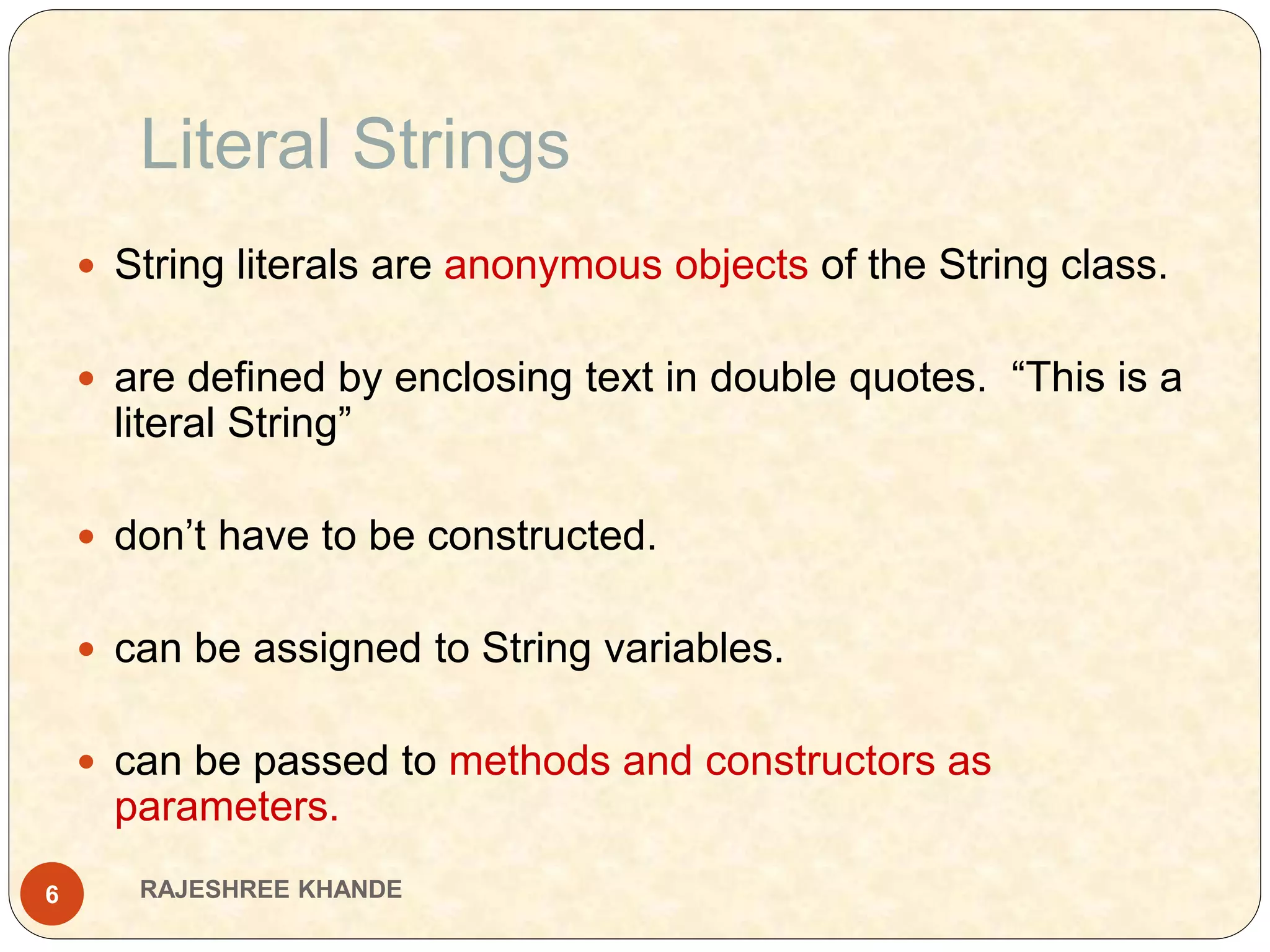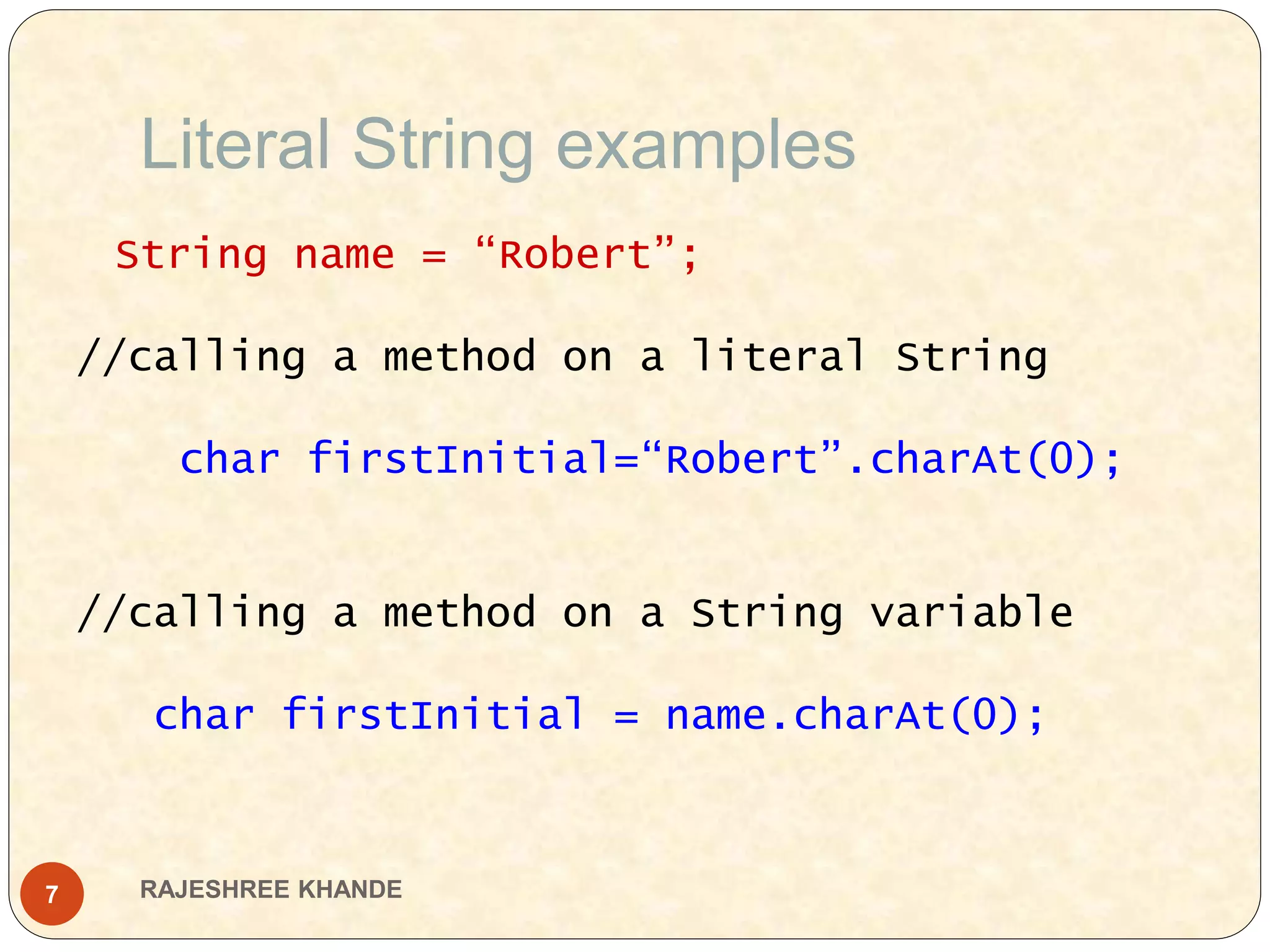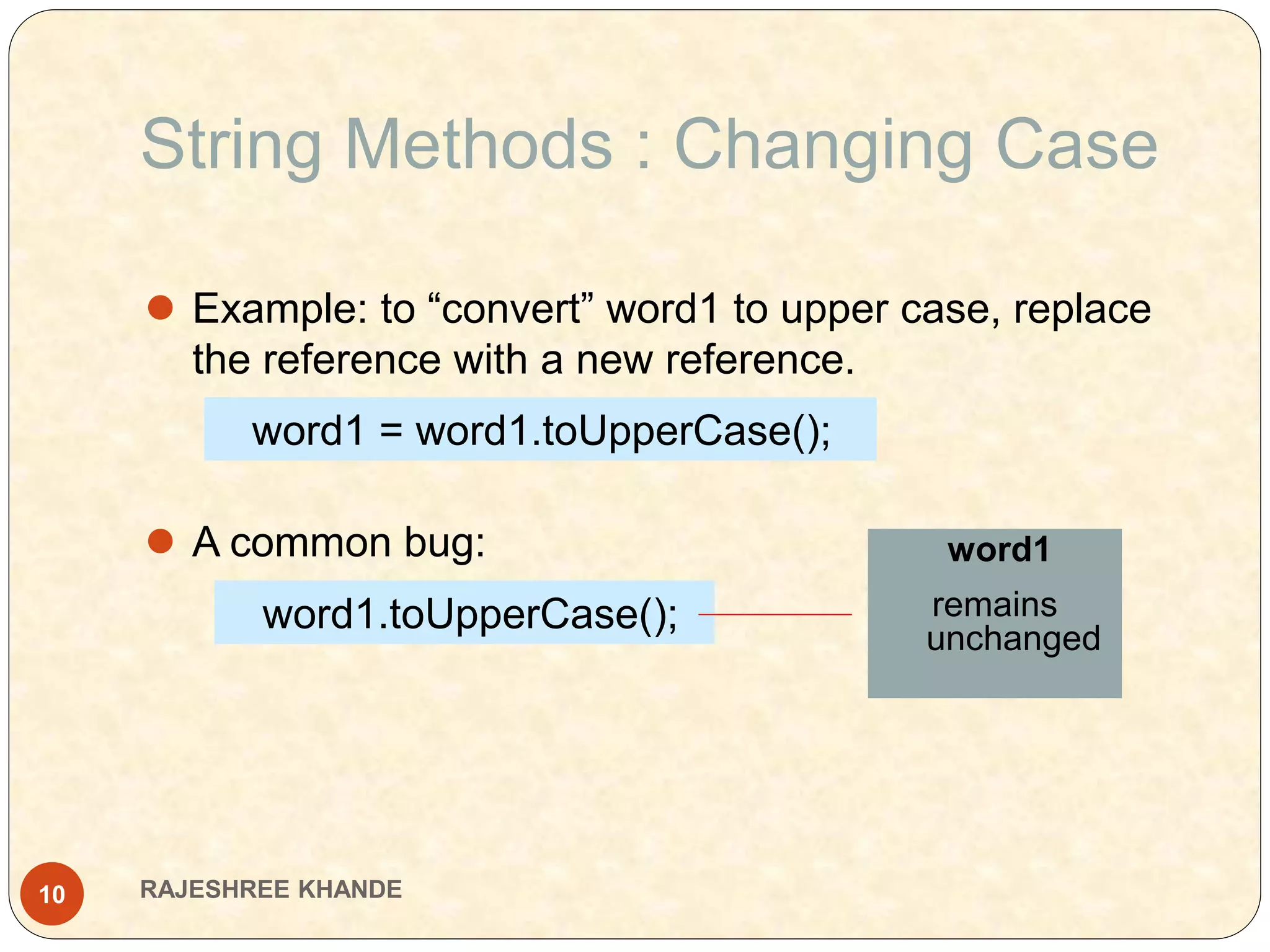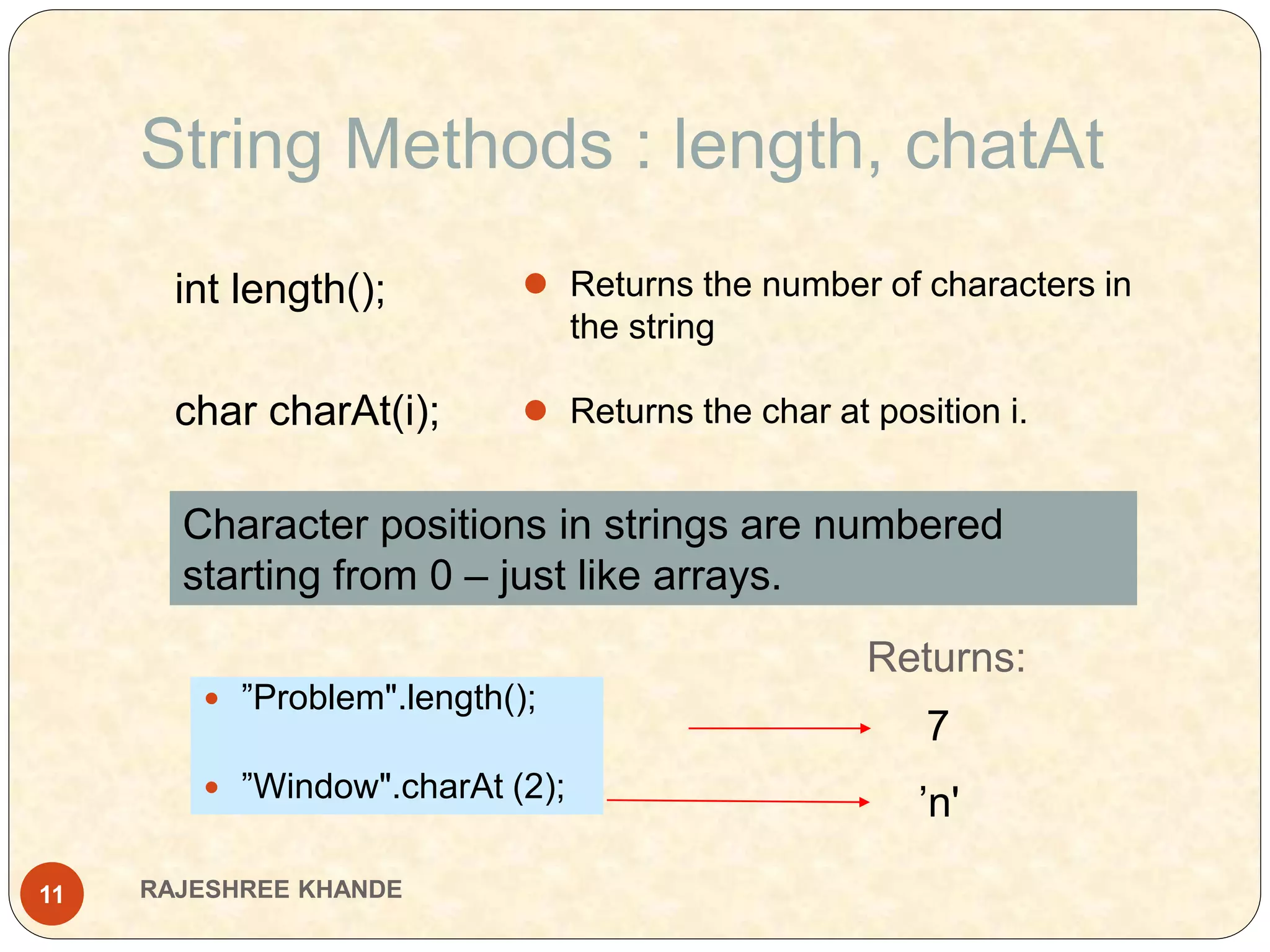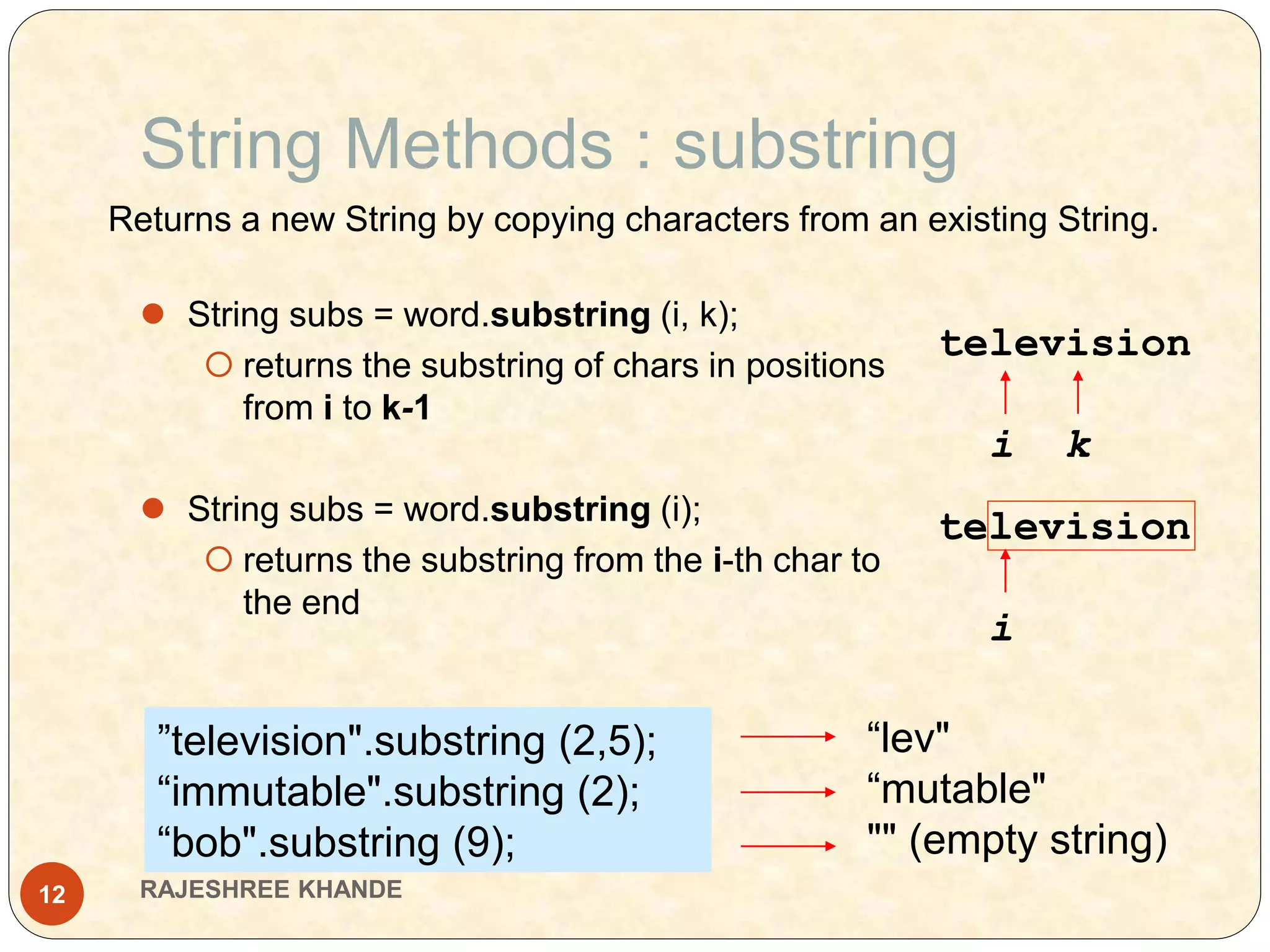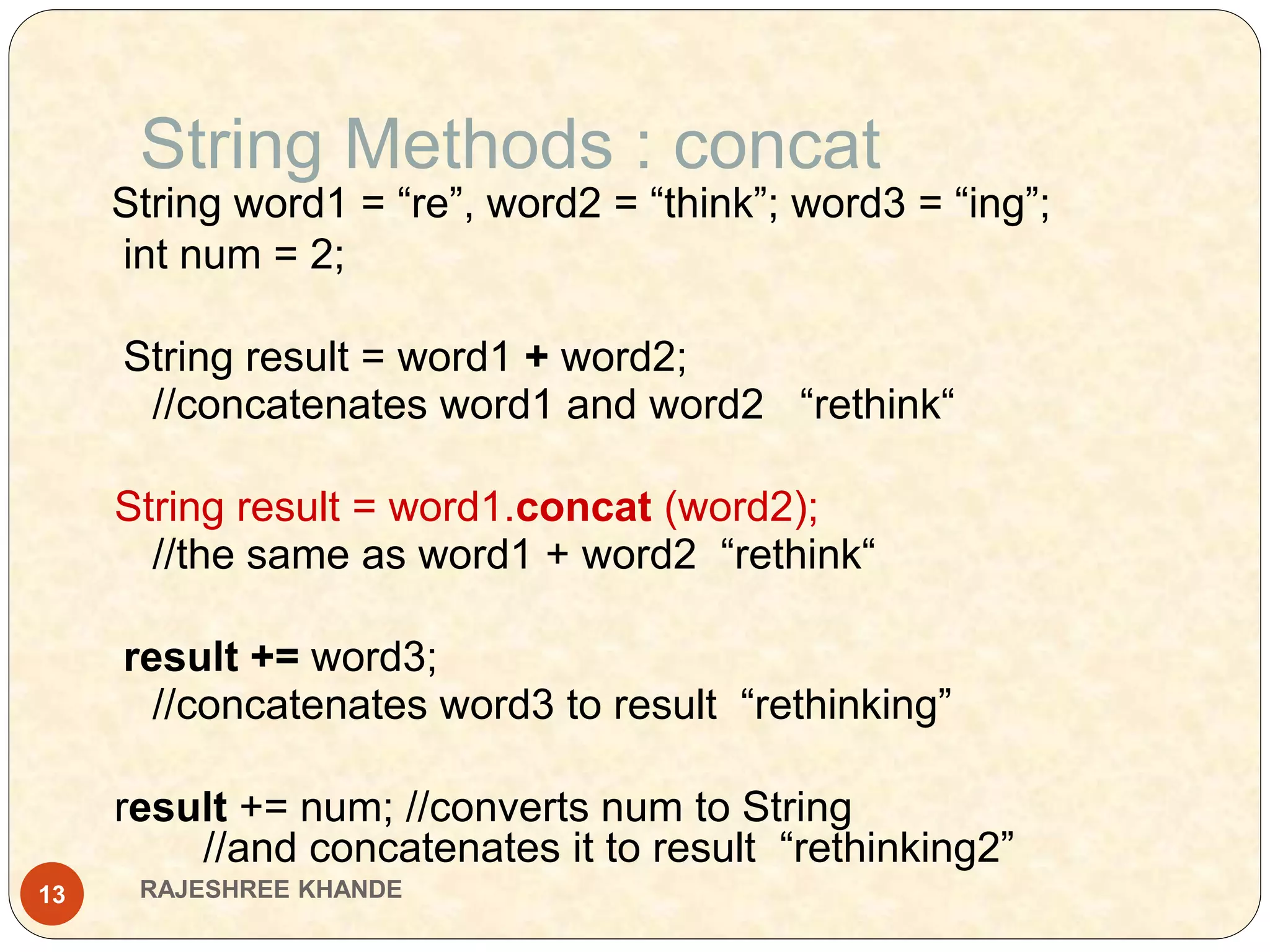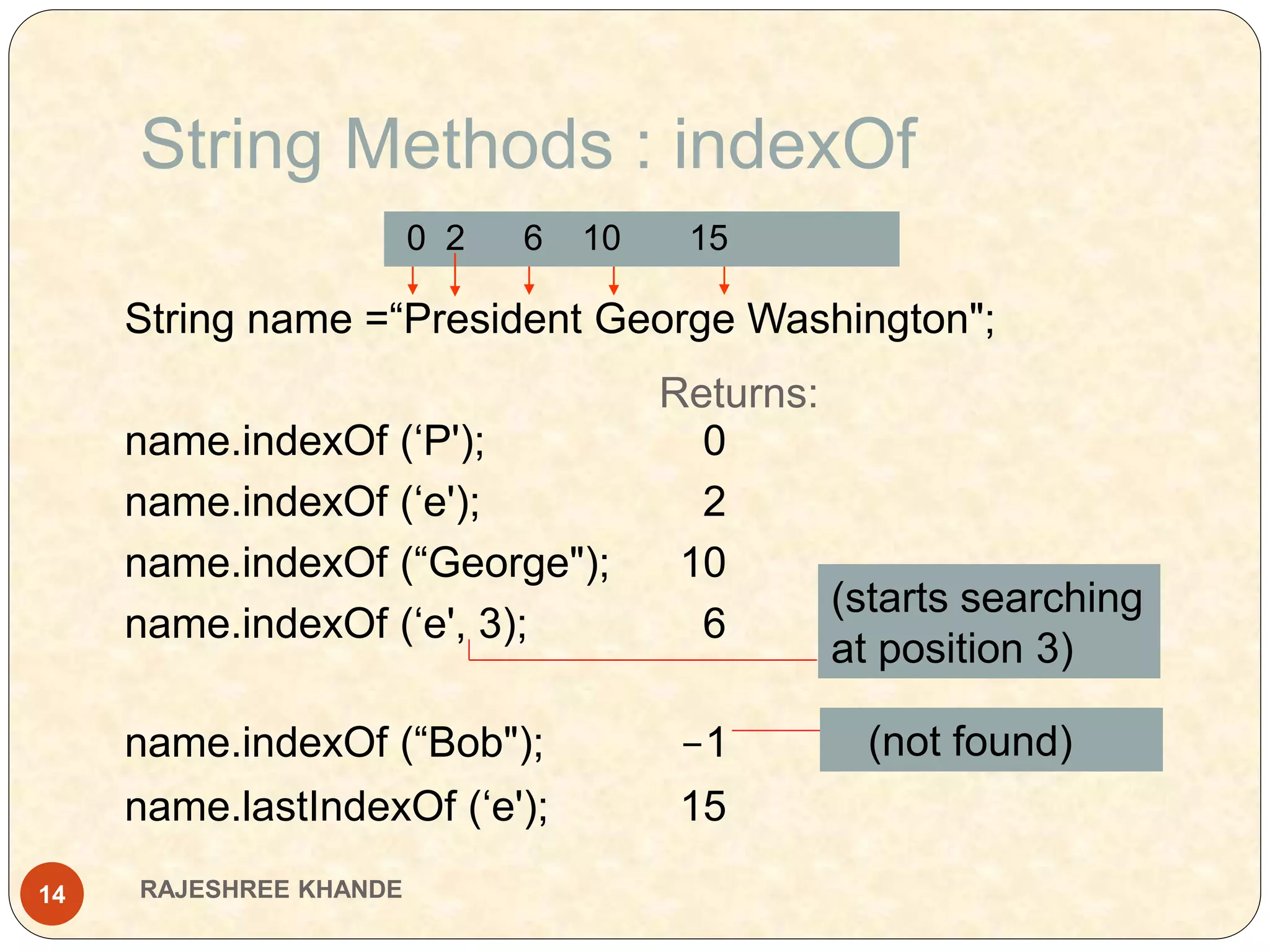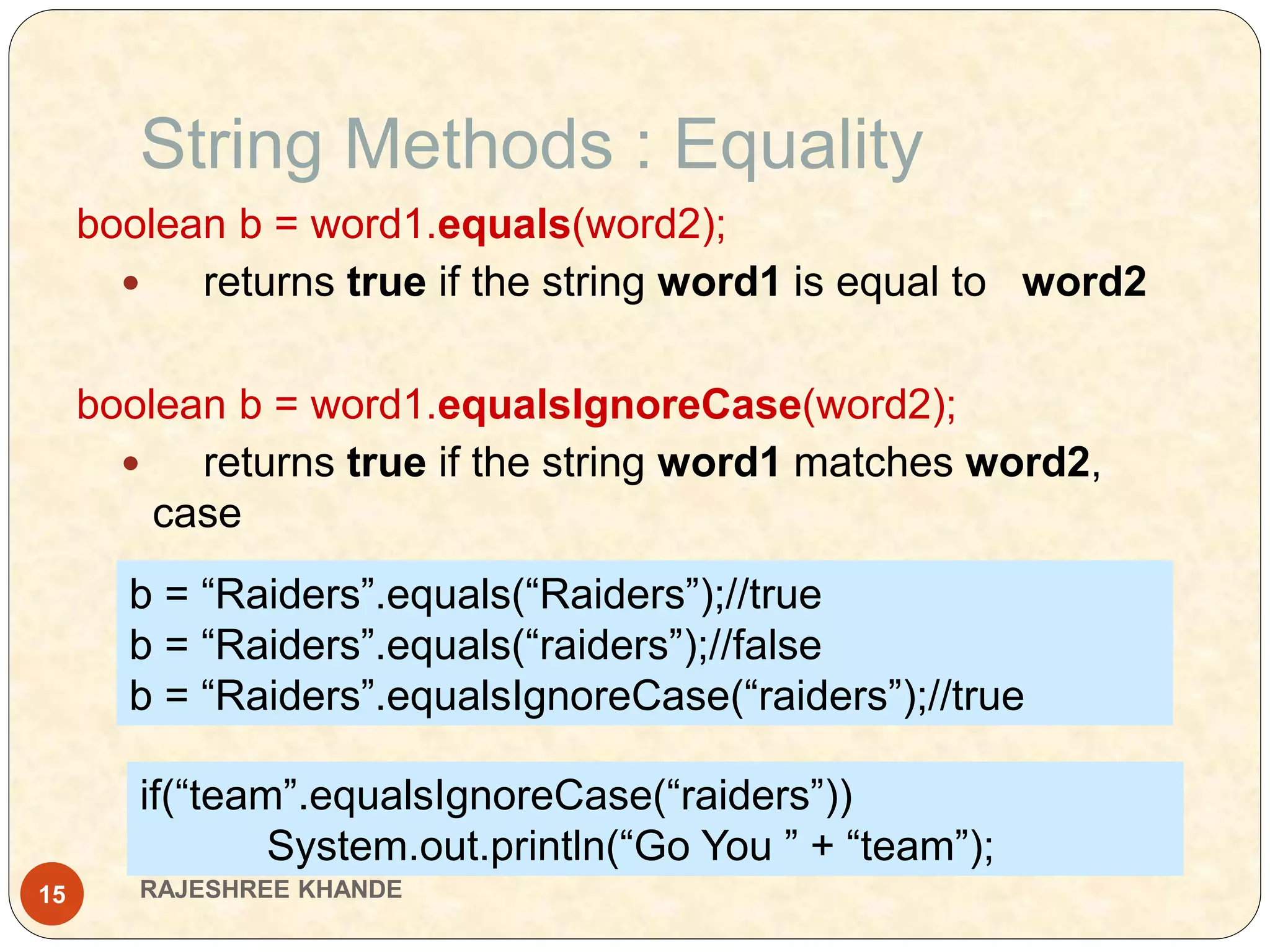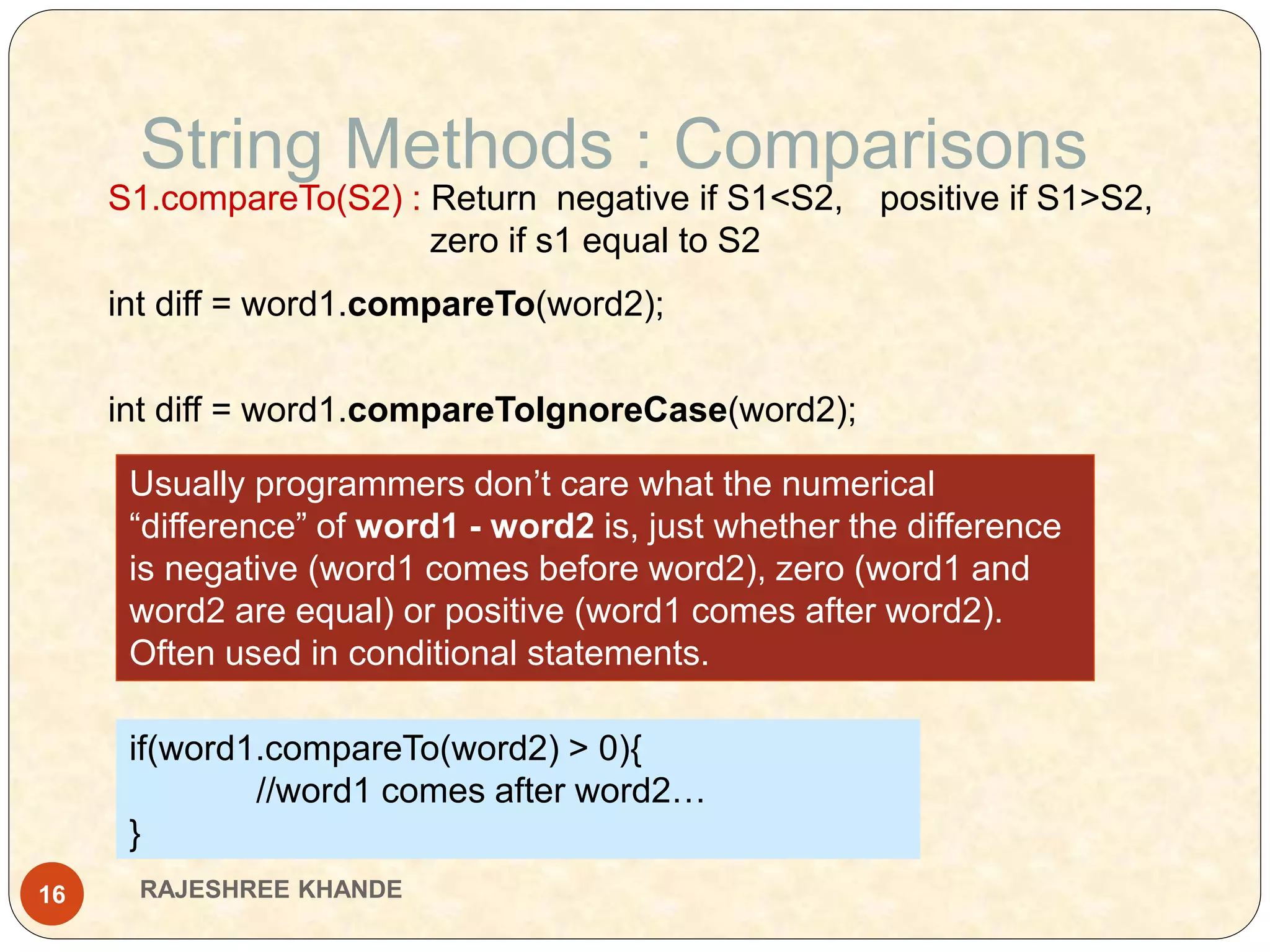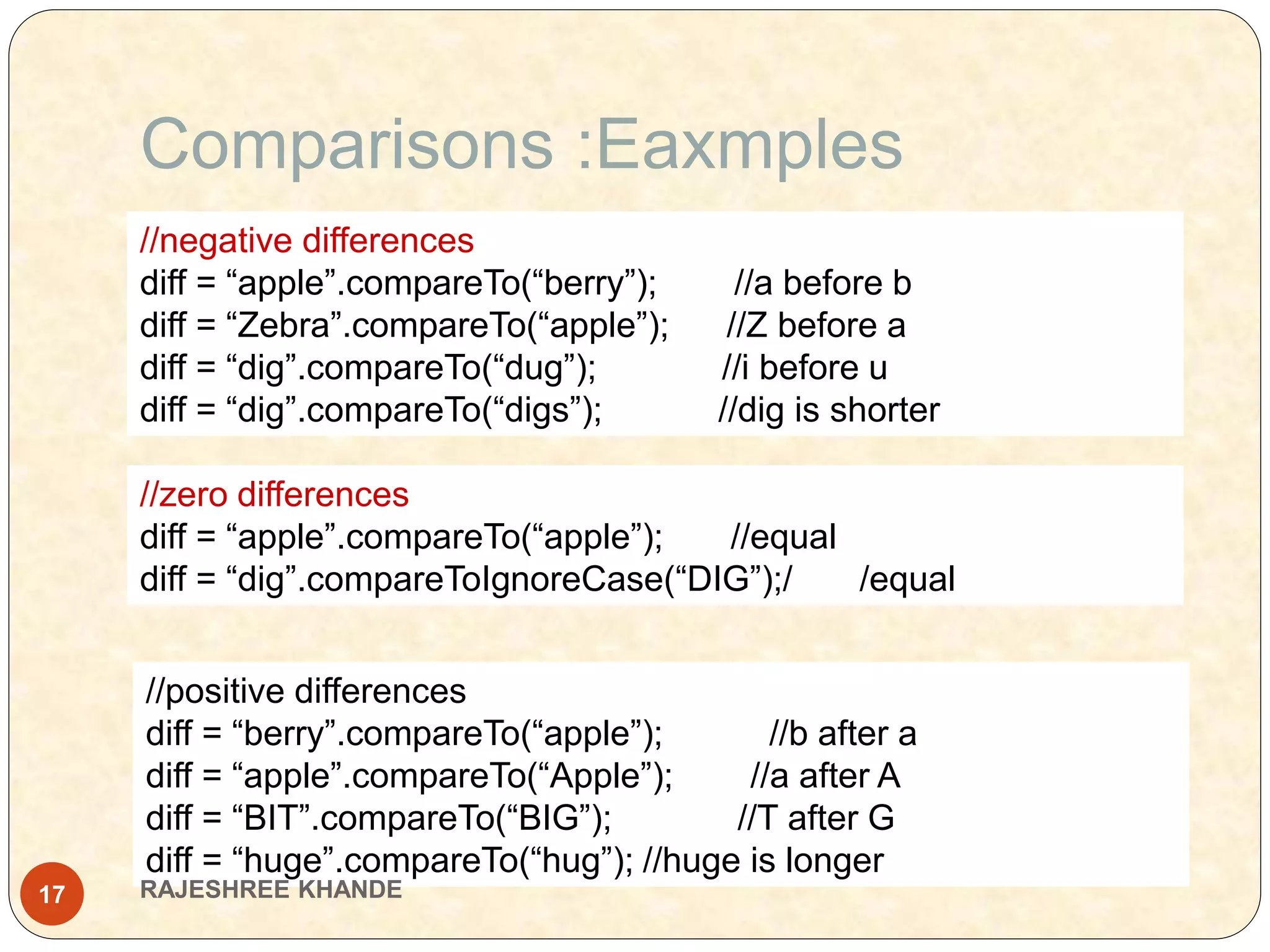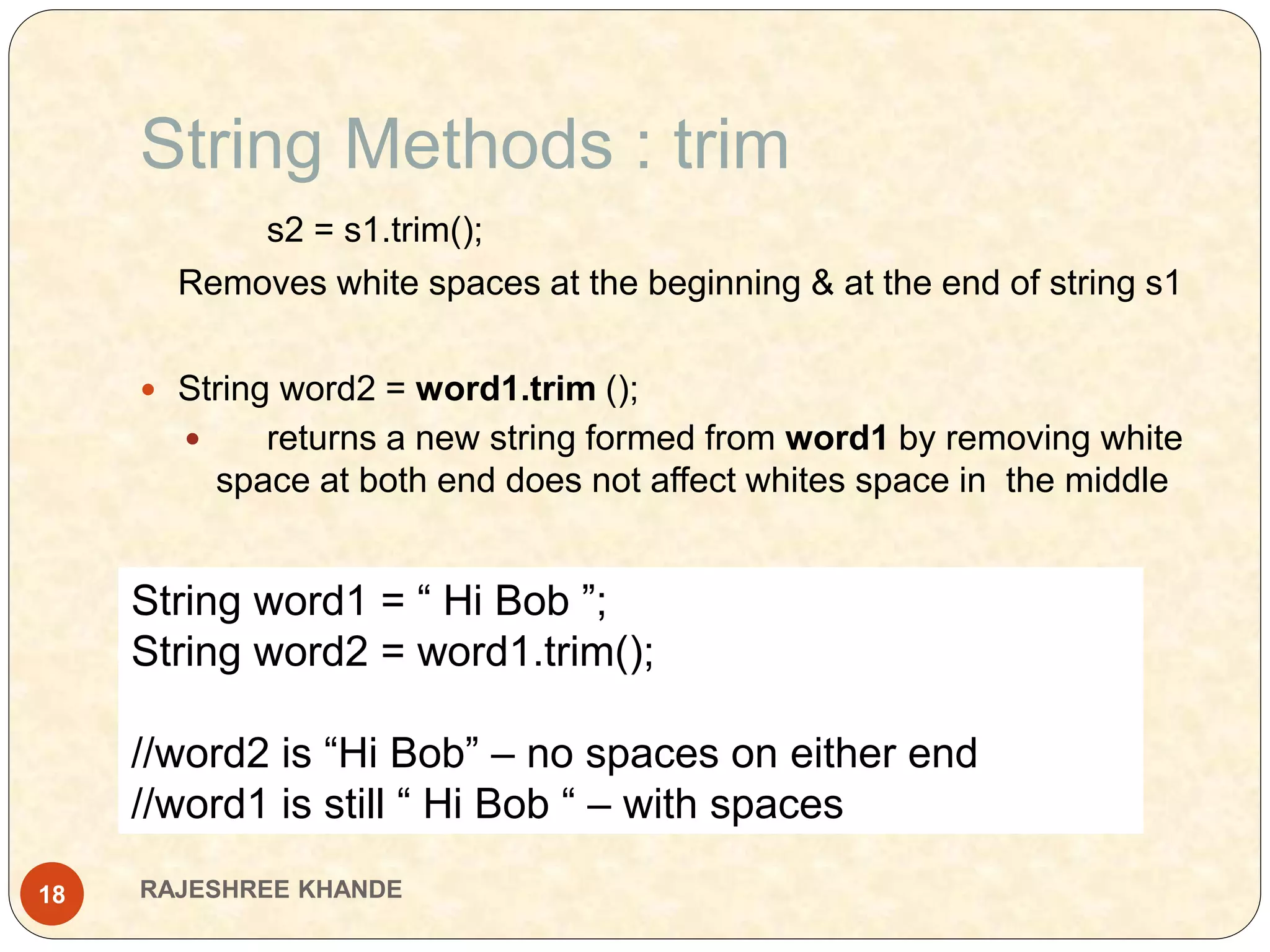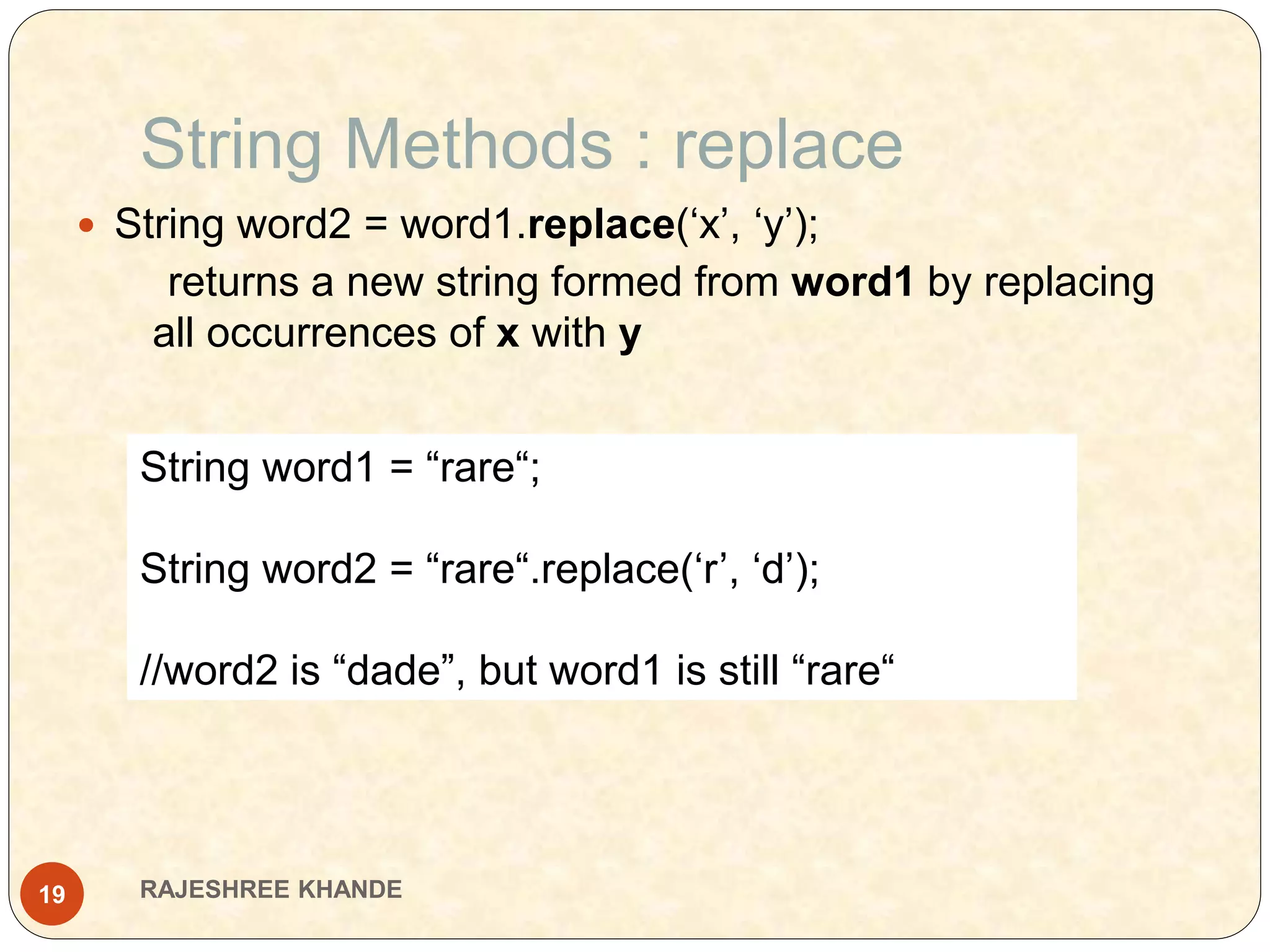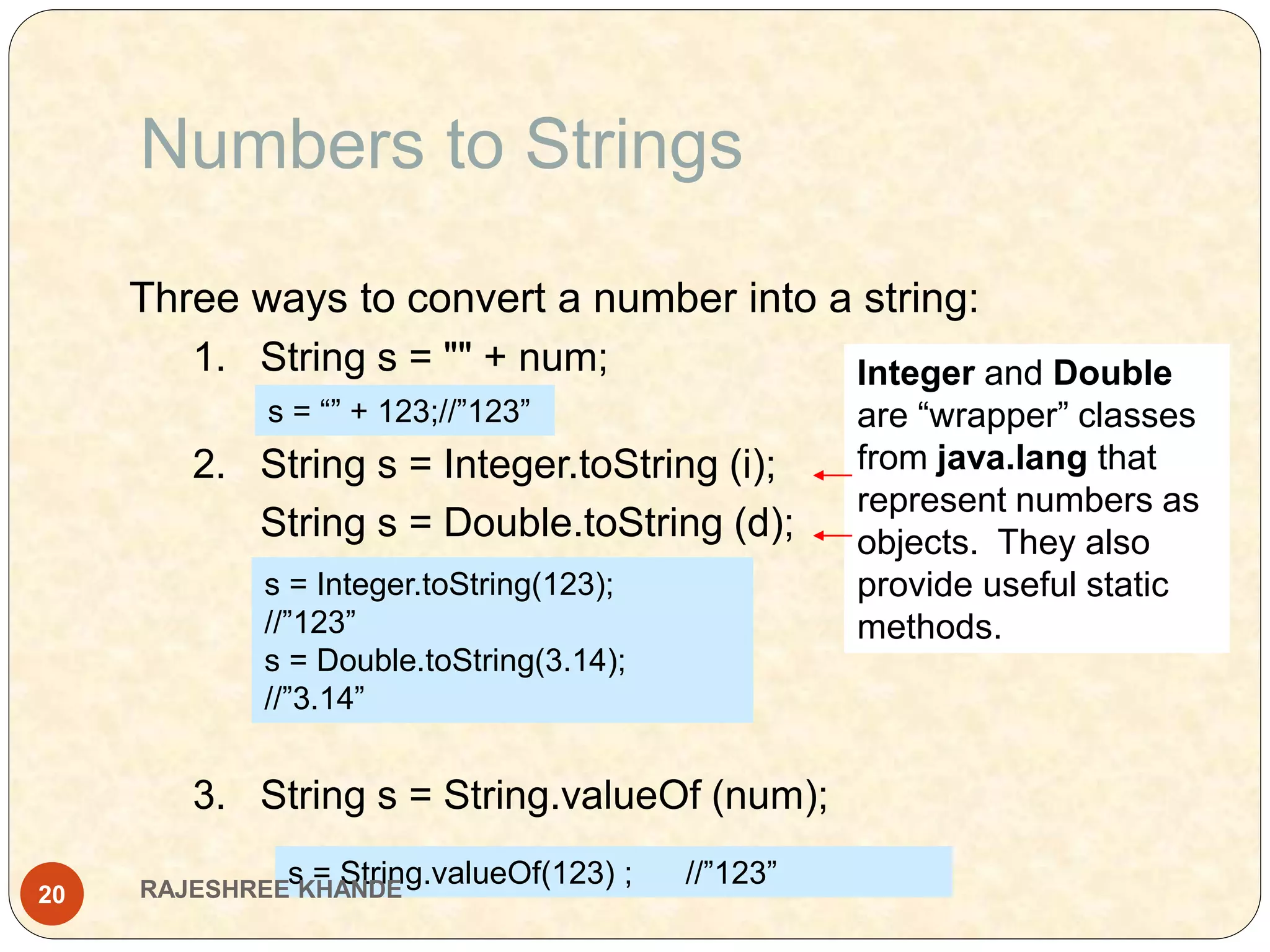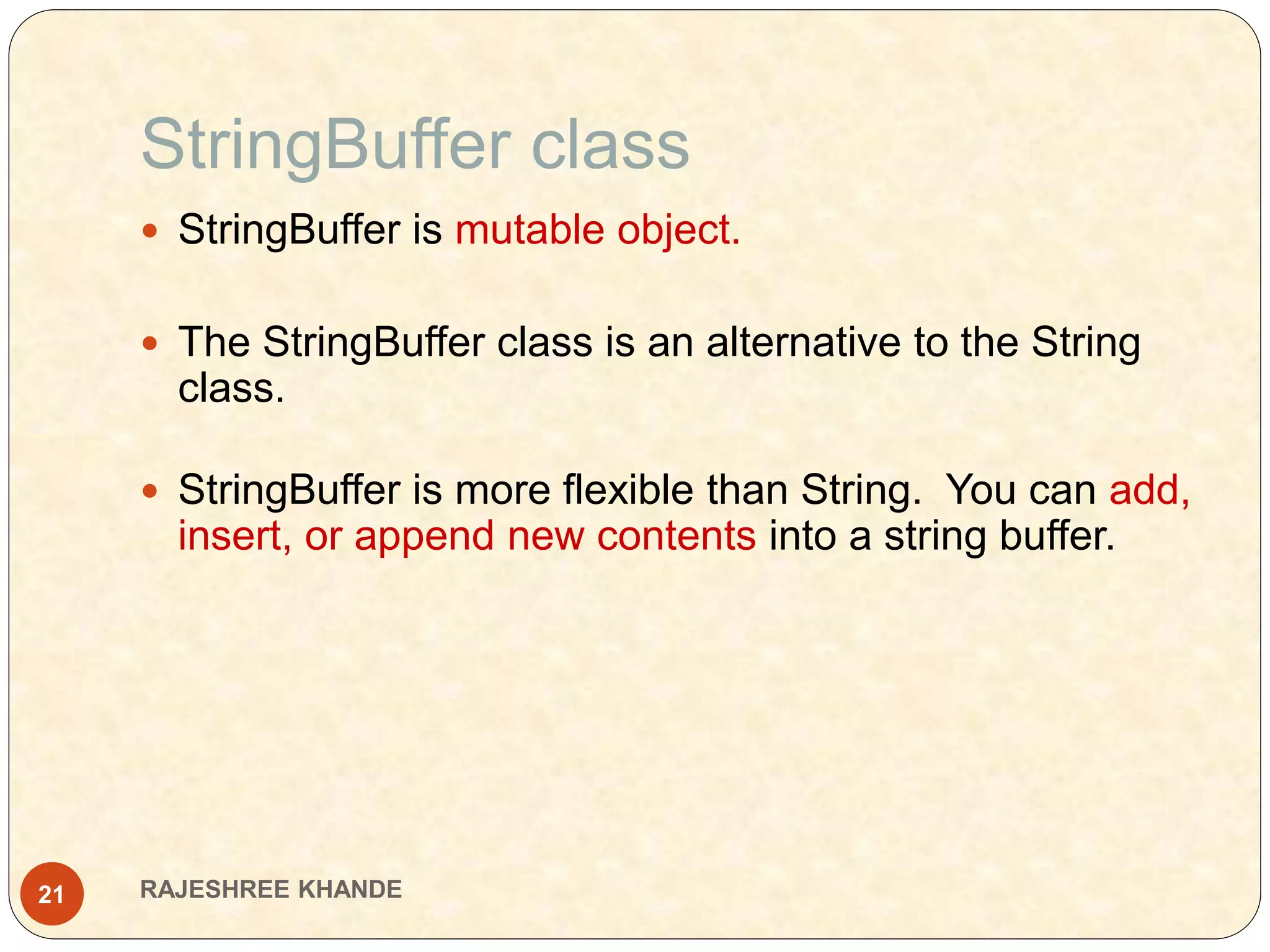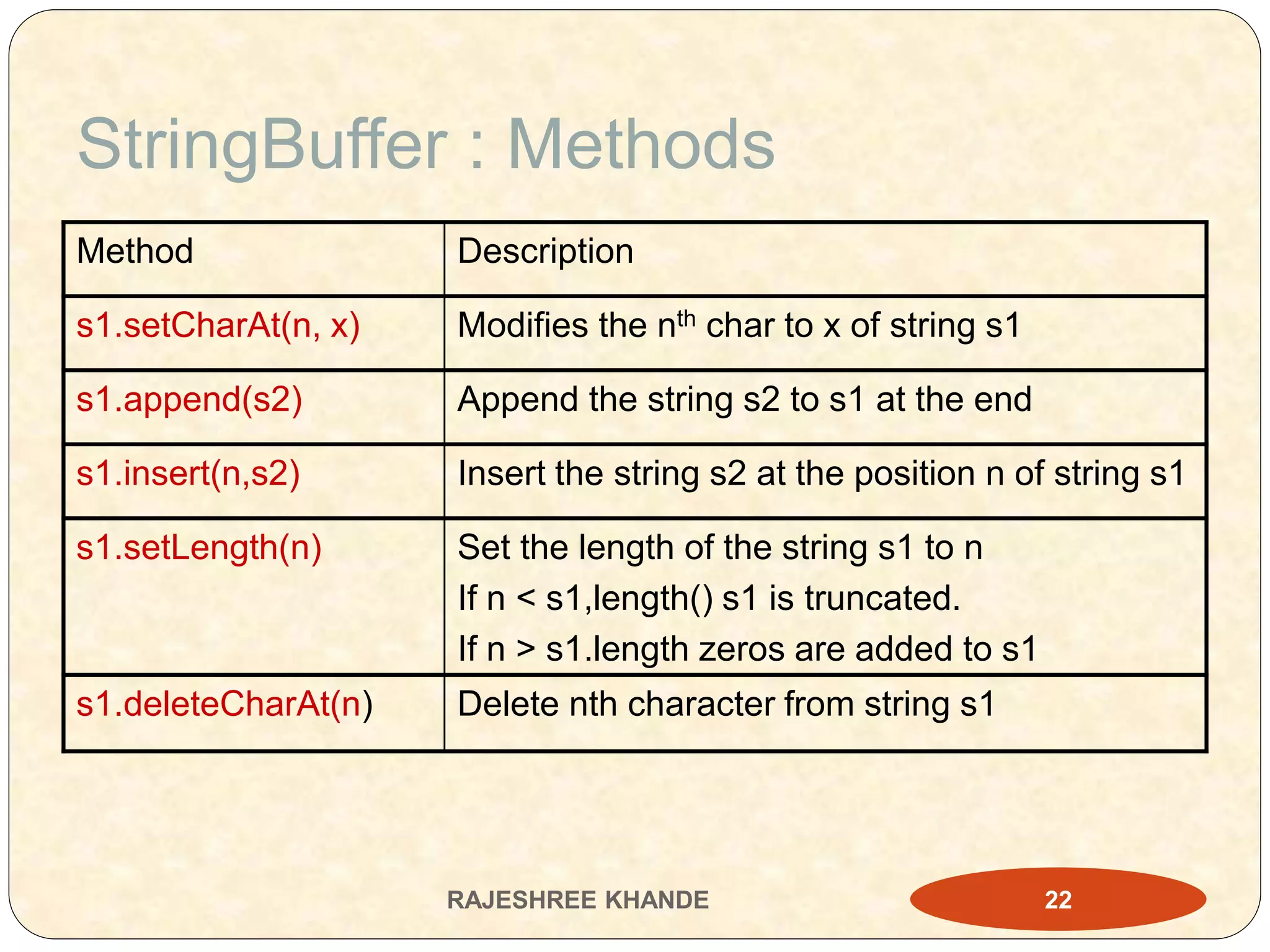The document discusses the String class in Java. It states that a String represents a sequence of characters and belongs to the java.lang package. Character sequences can be represented using character arrays, but character arrays do not support the full range of string operations. In Java, strings are class objects implemented using the String and StringBuffer classes. Strings are immutable while StringBuffers are mutable and support modifying string contents.
![String Class :
String represent a sequence of character.
The String class belongs to the java.lang package, which
does not require an import statement.
Sequence of character is represented in java is by using
a character array
char charArray[ ] = new char[4]
charArray[0]= ‘J’;
charArray[1]= ‘a’;
charArray[2]= ‘v’;
charArray[3]= ‘a’;
1 RAJESHREE KHANDE](https://image.slidesharecdn.com/stringclass-200516102202/75/Java-String-class-1-2048.jpg)
![String Class
X[0]
X[1]
X[2]
X[2][2]
X[1][3]
X[0][1]
Variable Size Array
2RAJESHREE KHANDE](https://image.slidesharecdn.com/stringclass-200516102202/75/Java-String-class-2-2048.jpg)


![String Array
We can also create & use array that contain
strings.
String itemArray[] = new String[3];
We can assign the element to this array by using
for loop.
5 RAJESHREE KHANDE](https://image.slidesharecdn.com/stringclass-200516102202/75/Java-String-class-5-2048.jpg)
